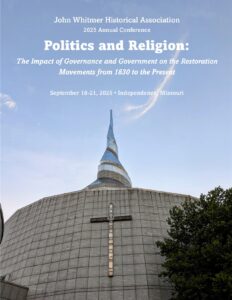Panel 101 (7:30 p.m. CDT, Friday, October 22)
Title: On the Scriptural Periphery: Perspectives on Joseph Smith’s Egyptian Project by Christopher Smith, Susan Staker, David Bokovoy 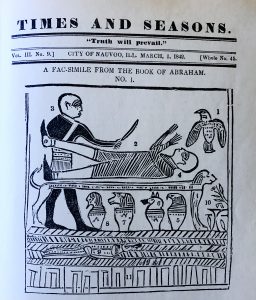
Abstract: In 1835 Joseph Smith purchased some ancient Egyptian papyri and four mummies, which acquisitions galvanized several projects on the scriptural periphery. Three panelists offer perspectives on Smith’s Egyptian project. David Bokovoy provides a brief introduction to biblical criticism and the historical contextualization of Joseph Smith’s scriptural production. Christopher C. Smith compares the papyri to the Book of Mormon’s ephemeral golden plates and explains how the Mormon prophet fitted the two records into a dispensational understanding of salvation history based on inherited priestly and kingly lines. Susan Staker traces Joseph’s construction of a quasi-scriptural female character called Kahtoumun, a proxy for investigating the pure language of the first fathers, women’s status in a patriarchal world, and sexual danger.
Biographical Sketch: Christopher Smith has a PhD in Religion from Claremont Graduate University and currently serves as the book’s manager for John Whitmer Books.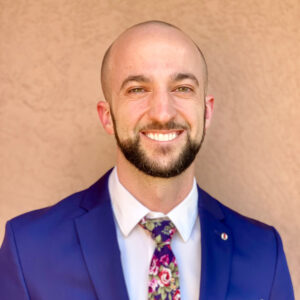
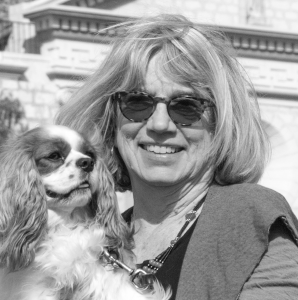
Susan Staker lives on Whidbey Island in Washington State, where she reads, writes (mostly about Joseph Smith), gardens, rides the ferry, and walks her dog. In past lives, she did editorial work for Adobe Systems, Signature Books, and Sunstone Magazine and studied narrative theory at the University of Utah.
David Bokovoy holds a PhD in Hebrew Bible and the Ancient Near East from Brandeis University and is the academic director over Prison Education for Salt Lake Community College.
Panel 201 (10:00 a.m. CDT, Saturday, October 23)
Title: Author Meets Critics: Joseph and Lucy Smith’s Tunbridge Farm: An Archaeology and Landscape Study by Mark Staker, Kyle Walker, Michael Riggs, Paul DeBarthe
Abstract: In Joseph and Lucy Smith’s Tunbridge Farm, authors Mark Staker and Don Enders describe the findings of their archaeological study of Mormon founder Joseph Smith’s parents’ first home in the mountains of Vermont. They find that the Smith family may have farmed hops for beer or apples for cider, that Joseph Smith Sr.’s failed ginseng deal financially damaged the whole extended family, and that Lucy Smith’s “first vision”– a dream about her husband and his brother– evoked a meadow near her house where she spent a lot of time. Critics will weigh in on the findings, and Mark will provide an update on new pollen research conducted since publication of the book.
Biographical Sketch: Mark Staker received a PhD in anthropology from the University of Florida. And he has worked for twenty-seven years in the Church History Department of The Church of Jesus Christ of Latter-day Saints. The John Whitmer Historical Association has honored him the Best Book award and the Best Article award for his work in Mormon history, and he considers his associations in JWHA among the highlights of his life.
Kyle Walker received his PhD in Marriage and Family Therapy from Brigham Young University. He is the author of two books on the Joseph Sr. and Lucy Mack Smith Family, and more recently, a biography of William B. Smith. He is a faculty member at BYU-Idaho in Rexburg.
Michael S. Riggs is the JWHA former president who presided over it’s 30th Annual meeting. His MAR was done at Park University, and he has presented and published a number of peer reviewed articles in Mormon studies. He is a professional public historian who has worked archeological investigations on Mormon and Native American projects. He has presented papers at the Missouri State Capital, a Unitarian Universalist convocation and at George Washington’s Mount Vernon Estate.
Paul DeBarthe
Session 202: (11:15 a.m. CDT, Saturday, October 23)
Title: Translating the “Caractors”: The Quest for Reformed Egyptian ” by Steven L. Shields
Abstract: Blair B. Bryant, Mary Jo Jackel, Stanley Q. Johnson, and Jerry D. Grover, Jr. share many things in common. First, all are members of the Smith-Rigdon Restoration tradition; second, they each have a deep love for the Book of Mormon and believe it is a historical document. Finally, each of them, independent of the others, have published translations of the so-called “Anthon Transcript” or the document labeled “Caractors.” Bryant and Jakel are from Community of Christ heritage; the late Stanley Johnson and Jerry Grover are of LDS heritage. These four attempted translations have been done over the past 20+ years and represent modern efforts. There are other proposed translations, some recent, and some in times long past.
This paper will introduce the four translators and their work and will compare and contrast their efforts. Each translator has taken a different approach to the task, used differing methodology, and created unique translations of what they believe the text says, where it comes from in the believed source document.
Biographical Sketch: Steven L. Shields, a retired Community of Christ World Church appointee, is author of the well-known book, Divergent Paths of the Restoration. He divides his time between the United States and Korea, where he serves as vice president of the Royal Asiatic Society and writes for the English-language daily, The Korea Times.
Title: John Beck’s Fabulous Mine: An Outpost in the Tintic Mountains of Early Utah Territory by R. Jean Addams
Abstract: In the years following the settlement of the Brigham Young-led members of the early church to what later became the Territory of Utah, leaders often spoke of the Redemption of Zion and the return of the church to Jackson County as revealed to the prophet Joseph Smith. The LDS Church as an entity, or as members of its leadership, also entered into various businesses and other enterprises; certainly, mining ventures were the most speculative. Of those individuals who tried their luck prospecting, the story of Jesse Knight is the most well-known. However, he was not the first church member to look for gold and silver. This presentation will, instead, center on Mormon immigrant, John Beck, who staked a mining claim in the Tintic Mountains in the year 1870 and “struck it rich” and led, in part, to the establishment of Eureka. Of the various mining companies’ ventures involving the LDS Church or its leaders, the Bullion-Beck mine, and its “consecrated” stock fund was both unique in its arrangement and purpose and controversial in its management of the company and the fund.
In 1883, Beck, known as the “Crazy Dutchman,” solicited the help of President John Taylor and his First Counselor George Q. Cannon, in his re-structured venture in which they would be equals. The proposed arrangement was confirmed to Taylor by revelation, whereby they also surrendered 60% of their shares to Taylor as a “consecrated” stock fund; the specified purpose of which was for the building of the “Jackson County Temple and…the Redemption of Zion” and a return of the LDS Church to Jackson County.
In 1904 the LDS Church re-acquired 20 acres of the original Temple Lot purchased in 1831. The money used for this re-purchase came from a fund simply labeled: “Jackson County Temple and Redemption of Zion.”
Biographical Sketch: R. Jean Addams is a lifetime Mormon History enthusiast, independent historian, and author. He and his wife Liz reside in Woodinville, Washington. He recently completed his twentieth year as a volunteer Institute of Religion instructor. He holds a BS in Accounting and an MBA from the University of Utah and is happily retired. Addams has presented and published several articles dealing with the “Redemption of Zion” and the “Church of Christ (Temple Lot).” His most recent articles include: “The Return of the LDS Church (1900-1907) to Jackson County and the Redemption of Zion,” (John Whitmer Historical Association Journal, Fall/Winter 2018); “The History and Acquisition of the Original Temple Lot Property in Independence, Jackson County, Missouri,” (Mormon Historical Studies, Spring 2019); and ” Zion’s Printing & Publishing Company: From Redemption of Zion to Corporation,” (Journal of Mormon History, April 2020). He is the author of Upon the Temple Lot: The Church of Christ’s Quest to Build the House of the Lord, (John Whitmer Books, 2010). Addams is a past president of the John Whitmer Historical Association, and a member of the Mormon History Association, the Sons of the Utah Pioneers, and the Missouri Mormon Frontier Foundation. His interests, besides family, include fishing and skiing.
Session 203 (1:15 p.m. CDT, Saturday, October 23)
Title: The Women’s Ordination Movement in the RLDS Church: Historical and Sociological Perspectives by Nancy Ross, David J. Howlett, Jacquie Bethel, Vicki Beebe
Abstract: Histories of women’s ordination in the RLDS Church, like similar histories in other denominations, have tended to focus on celebrating the progress reflected in institutional decisions. These histories often miss the grassroots advocacy movements and the complexity of power issues in a modernizing church. This paper tells a different narrative about women’s ordination in the RLDS Church that centers the work of RLDS women involved in the group AWARE. RLDS feminists in the 1970s developed a critique of priesthood and sought to empower ordinary members rather than have women participate in what they perceived as a corrupt system. Ultimately, some RLDS feminists viewed women’s ordination as a concession to their goals of sharing power across gender lines in a global church.
Biographical Sketch: Nancy Ross is an associate professor in the Interdisciplinary Arts and Sciences Department at Dixie State University, where she has been teaching for 14 years. She is an ordained elder in Community of Christ and pastor of the Southern Utah congregation.
David J. Howlett is the Mellon Visiting Assistant Professor of Religion at Smith College in Northampton, Massachusetts. He is the author of Kirtland Temple: The Biography of a Shared Mormon Sacred Space (Illinois, 2014) and co-author of Mormonism: The Basics (Routledge, 2017). David also serves as one of the three volunteer World Church Historians for Community of Christ.
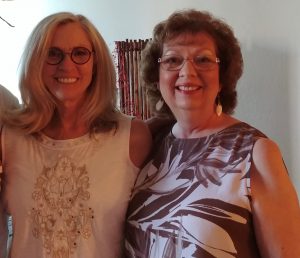 Jacquie Bethel is the daughter of Lois Braby, currently serves on the Board of the Historic Sites Foundation, Co-Pastor of the Gardena Congregation in California.
Jacquie Bethel is the daughter of Lois Braby, currently serves on the Board of the Historic Sites Foundation, Co-Pastor of the Gardena Congregation in California.
Vicki Beebe
Title: RLDS Preaching Charts: History and Typology by William D. Moore
Abstract: Elders and missionaries of the Reorganized Church of Jesus Christ of Latter Day Saints (RLDS) regularly used preaching charts to visually augment oral evangelism during the final decades of the nineteenth century and the first half of the twentieth century. These graphic and artistic works, created by both professional artists and enthusiastic amateurs, were frequently quite large, measuring in some cases as much as twenty feet long or seven feet tall. This twenty-minute illustrated presentation responds to Mark A. Sherer’s 2011 call, made in an article entitled “Beyond Nauvoo” in the John Whitmer Association Journal, to include analysis of preaching charts in expanding the history of the Reorganized Church.
By drawing on documentary research, church publications, photographic evidence, and more than one hundred preaching charts held by the Community of Christ archives and private collections, this presentation will offer a history and typology of this under-recognized genre of American visual culture. It will argue that between 1880 and 1950 preaching charts, influenced by Adventist prophetic paintings and created without official sanction or administrative supervision, can be understood as falling into particular categories recognized by members of the church at the time.
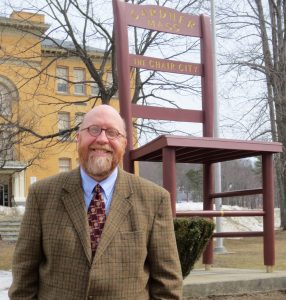
Biographical Sketch: William D. Moore is an Associate Professor of American Material at Boston University where he holds a joint appointment in the Department of History of Art & Architecture and the American & New England Studies Program. He has written and lectured extensively on American folk art, vernacular architecture, and fraternal organizations. He holds a Ph.D. in American Studies from Boston University and an A.B. in Folklore & Mythology from Harvard. His most recent book, Shaker Fever: America’s Twentieth-Century Fascination with a Communitarian Sect, was recently published by the University of Massachusetts Press.
Session 204 (2:30 p.m. CDT, Saturday, October 23)
Title: Schisms like Revolutions, Never Go Backward: The Godbeites and The Anti-Polygamy Debate by Brooke R. LeFevre
Abstract: The Godbeites, a small group of Utah Latter-day Saints who broke away from the main church in the 1870s, are often known for their employment of Spiritualism, their critique of Brigham Young’s economic views, and their connection to the women’s suffrage movement. The group was led by William Godbe and attracted many intellectuals among the church as well as English converts. They established their own church called the New Movement and helped found the Liberal Party in Utah. However, less is known about the role that the Godbeites played in national anti-polygamy debates. In 1871, Godbe formally denounced plural marriage and gave instructions on how and when plural marriages should be dissolved. In this paper, I examine the response of those outside of Mormonism to the Godbeites and their position on polygamy. I argue that a country still dealing with the aftermath of a deadly Civil War were hopeful that the Godbeites would internally reform the Utah church and rid it of the practice of polygamy so that outsiders would not have to take violent actions to do so.
Biographical Sketch: Brooke LeFevre is currently a PhD student in history at Baylor University. She received her MA in history from Utah State University and her BS in Psychology from Brigham Young University. She wrote her MA thesis on Elizabeth Pickett Tolman, a nineteenth-century Latter-day Saint plural wife who struggled with infertility. She published an article in the Journal of Mormon History in April of 2021 titled, “‘I Would Not Risk My Salvation to Any Man’: Eliza R. Snow’s Challenge to Salvific Coverture.” She is primarily interested in women and religion in the nineteenth century, particularly Latter-day Saint women and the practice of plural marriage.
Title: “Handling” the Gladdenites by Richard Saunders
Abstract: The followers of Gladden Bishop constituted the first instance of “apostasy” among those who had fled Nauvoo for the Great Basin. Drawing on previously inaccessible primary sources, this presentation discusses the Mormon attempts at isolation and the social and political problems inherent in religious dissent. “Handling” the Gladdenites set a background on which the American public would encounter Mormonism. Since most of Bishop’s followers later gravitated to the Reorganization, a transcript of Alfred Smith’s newly available sermon can now be linked to Brigham Young’s legendary “blood atonement” rhetoric, and to Bishop’s doctrinal assertions, providing a context for their experience in Utah not previously grasped in work on the group.
Biographical Sketch: Dr. Richard Saunders is an academic librarian and former Dean of Library Services at Southern Utah University. A graduate of Utah State University, he holds graduate degrees in history from USU and the University of Memphis. His career in history has centered on preserving the sources of history as a Certified Archivist and special collections librarian, but he has also researched, written, and published widely in historical topics including Yellowstone, the American West, Mormons, American popular literature, and the US civil rights movement. He is presently at work on a biography of historian of western America Dale L. Morgan, and a study of post-war social and economic change in the rural South. This presentation is an update of part of his 1989 thesis on Francis Gladden Bishop’s career and the Mormon Diaspora.
Session 205 (3:45 p.m. CDT, Saturday, October 23)
Title: “Actors Wandering through the Desert to Brigham: The Strange, True Tales of Carter’s Dramatic Combination and their Spirit Guides, 1871” by Lee Krähenbühl
Abstract: On June 14, 1871, a bedraggled company of actors, Carter’s Dramatic Combination, called on Brigham Young in Salt Lake City. They claimed to have traveled unarmed the nearly 700 miles from Los Angeles, California, through desert, plains, and hostile Native American territory to be baptized by him—at the direction of “spirit guides” who communicated with them through the use of a planchette, a Spiritualist writing tool popular in the mid-19th century. Young baptized them and immediately arranged starring positions for them in the stock company of his Salt Lake Theatre. In the sesquicentennial year of these events, this article uses an under-analyzed affidavit by actor W. J. COGSWELL (1836-1906) to explore the Carters’ claim in detail, its basis in historical fact, and its place in subsequent legend.
Biographical Sketch: Dr. Lee Krähenbühl is Chair of the Communication Department and Director of the Graduate Program in Communication Studies at Stevenson University, Owings Mills, Maryland. He has taught Theatre History and World Religions at the college and university levels since 1987. Lee’s article “Thomas A. Lyne, the Latter-day Saints, and the American Theatre: Confluences and Influences, 1844-1904” appeared in the Spring/Summer 2020 issue of The John Whitmer Historical Association Journal. He lives in Silver Spring, Maryland, with his family.
Title: “Mormons, Danites, and Gentiles: Stereotypes on Stage in 19th Century America” by Emily Marie Crumpton
Abstract: In 1858 in New York City, the curtain lifted at Burton’s Theater for Thomas Dunn English’s new play “The Mormons: Or, Life in Salt Lake City.” Nearly twenty years later, also in New York City, Joaquin Miller’s play “The Danites in the Sierras” debuted at the Broadway Theater. “Mormons” were on the minds of Americans. The opening of each play coincided with two important political events: the Utah War (1857-1858) and the trial and execution of John D. Lee (1877). These events caused much excitement throughout the country. In 1858, newspapers informed readers about the war and, in 1877, included details about Lee’s trial. Consequently, most coverage of these events outside of Utah contributed to anti-Mormon sentiments. English and Miller exploited the fears and anxieties of their audience members who possibly already viewed Latter-day Saints with suspicion. Through the application of racial and cultural stereotypes in their plays, English and Miller vilified Latter-day Saints, which sensationalized and perpetuated misconceptions about Church leaders and life in Utah.
 Biographical Sketch: Emily Marie Crumpton works for the Church History Library for the Church of Jesus Christ of Latter-day Saints as the Content Manager for the Pioneer Database. She graduated with a Master of Arts in History from Utah State University and is presently enrolled in a Master of Library and Information Science program through Wayne State University. Her primary areas of research include 19th century media, mortality, crime, and gender. She is also developing subject matter expertise in the history of the Salt Lake City Cemetery. She loves theatre, old books, and spending time with her two children.
Biographical Sketch: Emily Marie Crumpton works for the Church History Library for the Church of Jesus Christ of Latter-day Saints as the Content Manager for the Pioneer Database. She graduated with a Master of Arts in History from Utah State University and is presently enrolled in a Master of Library and Information Science program through Wayne State University. Her primary areas of research include 19th century media, mortality, crime, and gender. She is also developing subject matter expertise in the history of the Salt Lake City Cemetery. She loves theatre, old books, and spending time with her two children.
Session 206 Presidential Address (7:00 p.m. CDT, Saturday, October 23)
Title: Joseph’s Red Brick Store by Jill Brim
Abstract: The Red Brick Store’s doors opened in 1842, not only for the selling of dry goods, but welcoming groups including the Nauvoo City Council, the Female Relief Society of Nauvoo, and various priesthood quorums. The resulting decisions of these meetings influenced Nauvoo and its citizens while Joseph operated the store and after his death.
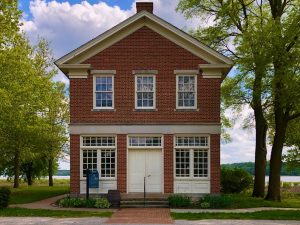
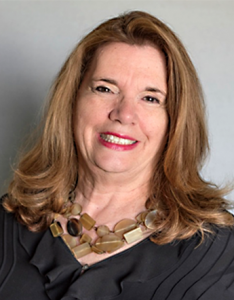
Biographical Sketch: Born in Chicago, Jill Brim had an interest in how religious communities thrive in the Midwest. She first visited Nauvoo in 1969, intrigued by a foundation labeled “Joseph Smith’s Store.” Jill received a B. A. from BYU in English and an M.A. from the University of Chicago in Social Science. She teaches U.S. History and Humanities at Dixie State University. She serves as the JWHA President.
